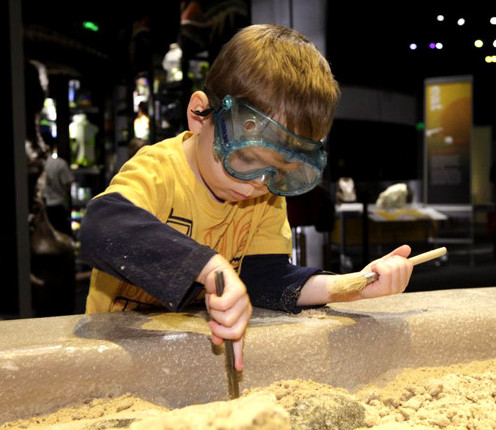Articles
The price tag of the first nuclear weapon was a mere four years, 130,000 people, and $26 billion (in 2014 dollars). But what did the U.S. buy with those resources, other than the Fat Man and the Little Boy? A transformed world. Since the Manhattan Project folded in 1947, only a few other projects can arguably have said to truly match the scale and success of America’s drive to make a nuclear weapon. The Apollo program and the decoding of the human genome are two worth consideration—and both have a heritage that can be traced back to the Project itself. Was the Manhattan Project the greatest ad hoc scientific collaboration of all time? And more importantly, could we follow the Project’s model to tackle daunting modern super-problems like climate change?
Read More
Bong Joon-ho’s feverish fantasy of post-apocalyptic proletarian revolution onboard a futuristic train is a thoroughly entertaining and thought-provoking film, but it definitely puts the ‘fiction’ in science fiction. Snowpiercer starts 17 years before the plot gets in motion, when humans spray a (fictional) cooling agent called CW7 into the upper atmosphere of Earth to try and combat global warming. But the substance works better than anyone expected and causes Earth’s temperatures to dive low enough to make it impossible to live on Earth—unless you’re one of the few refugees that managed to make it to the planet-circling train built by enigmatic inventor Wilford (Ed Harris). Spraying special tiny particles into the atmosphere is actually an approach some people have considered as a way to mitigate the greenhouse effect that traps solar radiation and warms the planet. Researchers actually got the idea from volcanic eruptions, when they noticed that the 1991 eruption of Mount Pinatubo in the Phillippines spewed around 20 million tons of sulfate particles into the air. The sulfate particles reflected enough sunlight to cause Earth’s average temperature to cool by .5 degree Celsius (.9 degree Fahrenheit) over 18 months. Some scientists are interested in the idea of creating an …
Read More
Author Paul Greenberg made a big splash in 2010 with his book Four Fish: The Future of the Last Wild Food, which explored modern fishing and its environmental impacts. He draws the lens even closer, examining the unique stories of U.S. seafood in American Catch: The Fight for Our Local Seafood.
Read MoreWhether you already have your summer road trip planned out, or if you’re just looking for a way to pique your curiosity during a local staycation, there’s a host of exciting new museum shows sure to spark a love of science in the whole family. One of these exciting exhibits may be in a city near you, but even if it’s not, it’ll be worth the trip. Credit: Franklin Institute 1. Climb through a brain at the Franklin Institute (Philadelphia, PA) The Franklin Institute exhibit Your Brain offers museumgoers a chance to get up close to all the complicated facets of gray matter. Visitors have the opportunity to “travel through a two-story tall neural network climbing structure with dynamic lighting and sound effects.” You’ll also be able to see a digital collage of the brain compiled from a variety of brain snapshots taken by all the latest cutting-edge neural scanning techniques, and play with a model neuron to see how brain cells send chemical and electrical signals to help guide every move you make, every breath you take, or every thought you think. Credit: iStock 2. Encounter spiders big and small at the American Museum of Natural History (New York City) For any …
Read MoreAfter Sara Lazar suffered a running injury in the 1990s, she decided to take up yoga and meditation. She remembers rolling her eyes whenever the teacher touted the supposed benefits of yoga: stress relief, a reduction in symptoms associated with depression and insomnia, and a happier and higher quality of life. After a few weeks though, Lazar’s outlook changed. “I started noticing that I was calmer and I was better able to handle difficult situations… and I was feeling more compassionate and open-hearted towards other people,” she said in a 2011 talk at TEDx Cambridge. Lazar, who was a Ph. D student in molecular science at the time of her injury, decided to change her career focus to study the neuroscience of meditation. Now Lazar is one of a growing number of researchers who are using Magnetic Resonance Imaging—a medical technique that uses a magnetic field and radio waves to peer inside the body—to see how meditation may mold the brain.
Read More
In Danny Boyle’s 2007 outer space thriller Sunshine, a group of scientists are trying to save our dying sun in the year 2057 with a seemingly counterintuitive method: sending a bomb into its core. As the sun’s weakened rays have turned the Earth into an icebox, their mission is to deliver a “payload” of their planet’s last remaining nuclear energy to bring the—ahem—sunshine back to its former glory.
Read More












